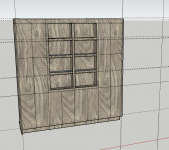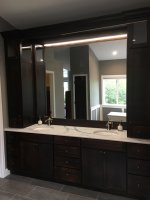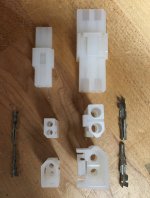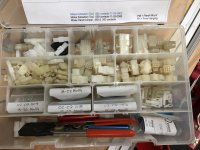I've got some LED tape light to put in underneath shelves. The light itself will be hidden by the face-frame, but I'd like to hide the wires as best I can too.
Are there any interesting or well-suited connectors for splicing the wiring from the transformer to the LED tape? And what do people use to keep the wires up and out of the way in this application?
Thanks,
Adam
Are there any interesting or well-suited connectors for splicing the wiring from the transformer to the LED tape? And what do people use to keep the wires up and out of the way in this application?
Thanks,
Adam




